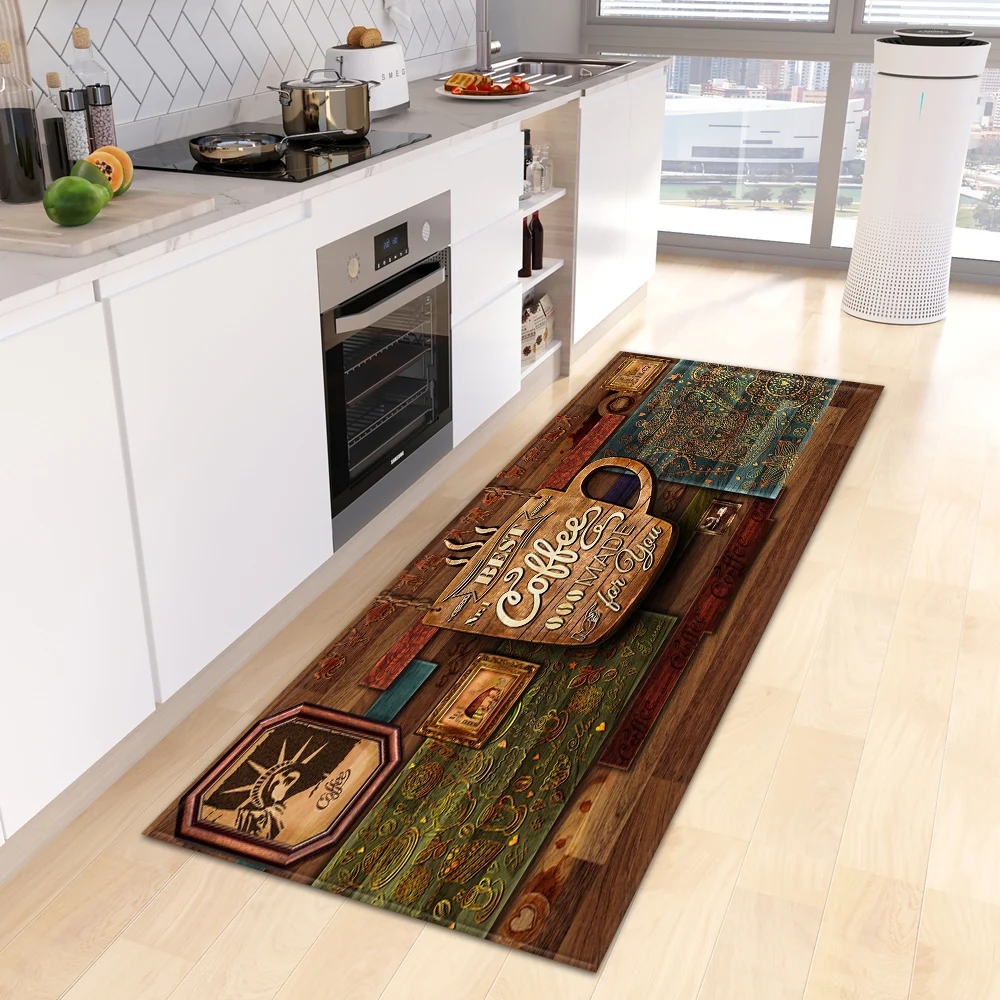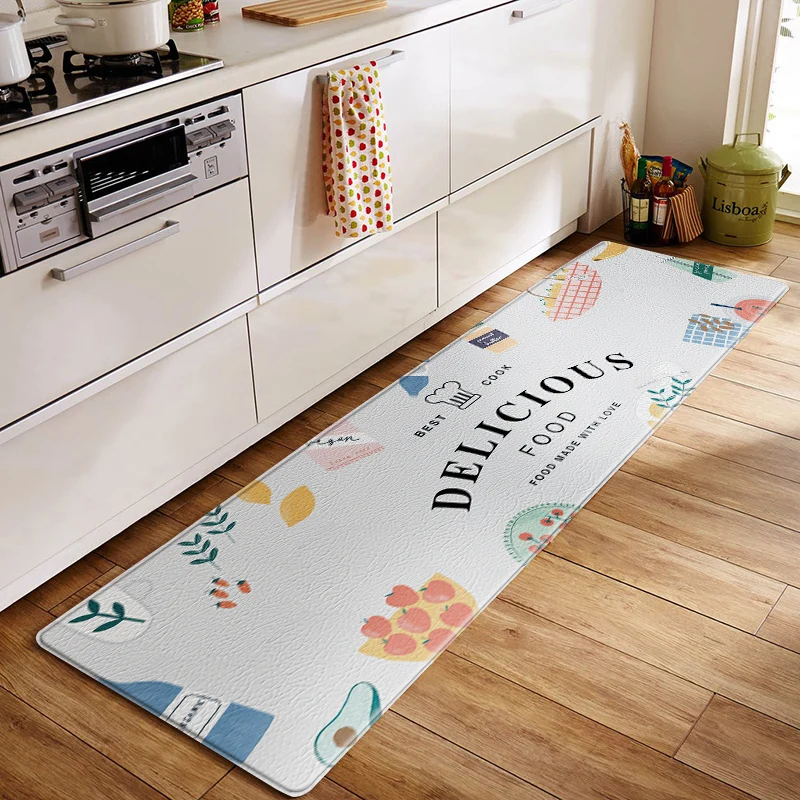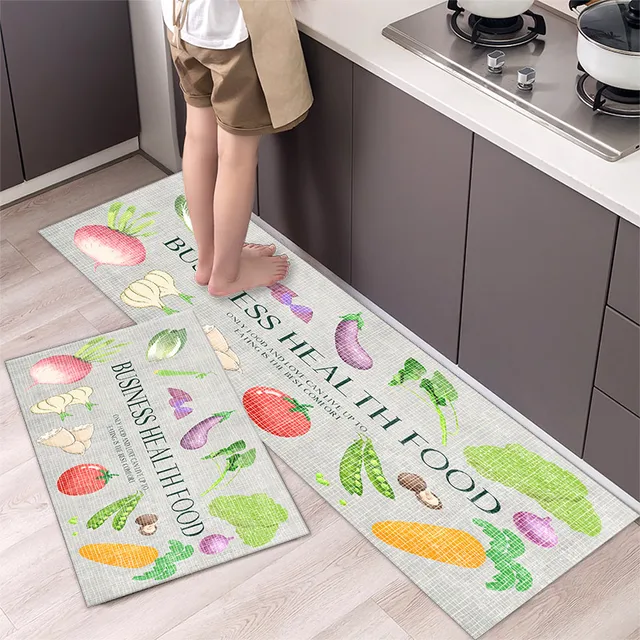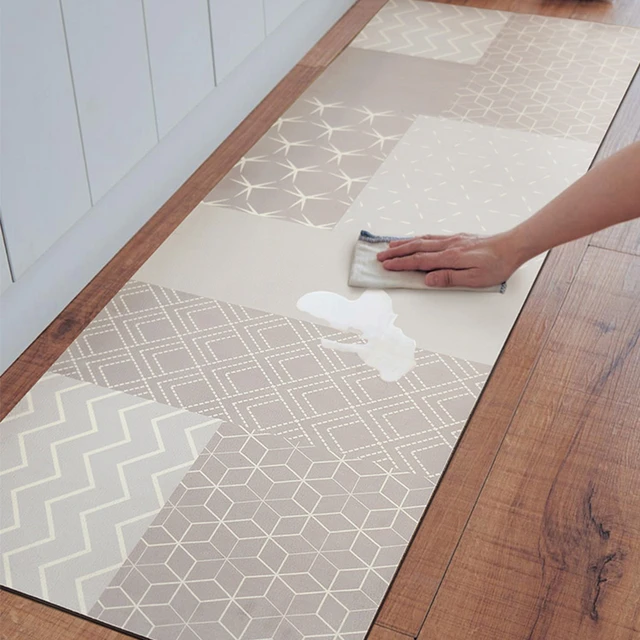 Introduction:
Introduction:
The kitchen is a bustling and high-traffic area in any home, making it important to invest in the best kitchen mat for comfort, safety, and cleanliness. In this comprehensive guide, we will explore the features and benefits of various kitchen mats available in the market. By understanding the different types of kitchen mats and their specific advantages, you can make an informed decision and choose the best mat for your kitchen.
 Importance of a Kitchen Mat
Importance of a Kitchen Mat
Comfort and Support:
A kitchen mat provides cushioning underfoot, reducing the impact on joints and muscles during prolonged standing.
It helps combat fatigue and provides comfort while cooking, cleaning, or performing other kitchen tasks.
Safety:
Kitchen mats offer slip resistance, reducing the risk of accidents caused by wet or slippery floors.
They provide stability and prevent falls, ensuring a safer kitchen environment.
Cleanliness and Hygiene:
Kitchen mats help protect the floor from spills, stains, and scratches, keeping the kitchen area cleaner and more hygienic.
They can be easily cleaned, preventing the accumulation of dirt and debris.
Different Types of Kitchen Mats
Anti-Fatigue Mats:
Anti-fatigue mats are designed to provide maximum support and cushioning for prolonged standing in the kitchen.
They often feature ergonomic designs and shock-absorbing materials to reduce muscle strain.
Gel Mats:
Gel mats are made of gel-filled materials that offer exceptional comfort and support.
They contour to the shape of the feet, providing relief from pressure points and improving overall comfort.
Rubber Mats:
Rubber mats are durable, slip-resistant, and resistant to water, oil, and grease.
They provide excellent traction and stability, making them ideal for kitchens with high levels of foot traffic.
Memory Foam Mats:
Memory foam mats conform to the shape of the feet, providing personalized comfort and support.
They are known for their exceptional cushioning, relieving pressure on the feet, knees, and joints.
 Considerations for Choosing the Best Kitchen Mat
Considerations for Choosing the Best Kitchen Mat
Size and Shape:
Consider the size and shape of your kitchen area to determine the appropriate dimensions for the mat.
Measure the available space to ensure a proper fit.
Thickness and Density:
Choose a mat with appropriate thickness and density to provide optimal cushioning and support.
Thicker and denser mats offer better shock absorption and impact resistance.
Slip-Resistance:
Look for a kitchen mat with a non-slip backing or textured surface to enhance stability and prevent slips and falls.
Mats with beveled edges also help prevent tripping.
Ease of Cleaning:
Consider mats that are easy to clean and maintain.
Look for mats that are stain-resistant and machine washable or easily wiped clean.
Maintenance and Care Tips
Regular Cleaning:
Clean your kitchen mat regularly to prevent the buildup of dirt, food residue, and stains.
Follow the manufacturer’s instructions for cleaning or opt for mats that offer easy-care options.
Drying and Air Circulation:
Ensure that the mat is thoroughly dry before placing it back on the kitchen floor to prevent moisture-related issues such as mold or mildew.
Consider mats with perforations or raised designs that facilitate air circulation and quick drying.
 Here are some common placements for kitchen mats:
Here are some common placements for kitchen mats:
Kitchen mats can be placed in various areas of the kitchen to serve different purposes. Here are some common placements for kitchen mats:
In front of the sink:
Placing a kitchen mat in front of the sink provides cushioning and support for your feet while doing dishes or other kitchen tasks. It helps alleviate fatigue and discomfort that can occur from standing on hard flooring for extended periods.
Near the stove or cooking area:
Another common placement is near the stove or cooking area. This helps protect the floor from spills, splatters, and potential grease that can accumulate during cooking. It also provides a comfortable and slip-resistant surface while cooking and preparing meals.
In high-traffic areas:
If there are specific high-traffic areas in your kitchen, such as entrances or frequently used pathways, placing a kitchen mat in these locations can help protect the flooring from wear and tear. It provides a cushioned surface that absorbs impact and reduces the risk of slips or falls.
Under the kitchen table or island:
If you have a kitchen table or an island with seating, placing a kitchen mat underneath can offer added comfort for those sitting or standing around the area. It also helps protect the floor from any accidental spills or dropped food.
Anywhere you prefer:
Ultimately, the placement of the kitchen mat depends on your specific needs and preferences. You can place it anywhere in the kitchen where you stand for long periods or where you want to add a touch of comfort and style.
Consider the size and shape of your kitchen mat to ensure proper coverage in the chosen placement. Additionally, make sure the mat is made of a material that is easy to clean and maintain in a kitchen environment, such as spill-resistant and non-slip materials.
Here are some popular trends for kitchen mats:
The popularity of kitchen mats is constantly evolving, and there are a few current trends in terms of style, material, and design. Here are some popular trends for kitchen mats:
Eco-Friendly Materials: There is a growing preference for eco-friendly materials in kitchen mats, such as natural fibers like bamboo or jute, which are sustainable and durable. Recycled materials and organic cotton are also gaining popularity due to their environmental benefits.
Non-Slip and Anti-Fatigue Features: Kitchen mats with non-slip and anti-fatigue properties are in high demand. These mats provide stability and cushioning, making it more comfortable to stand for longer periods while offering safety benefits by reducing the risk of slips and falls.
Stylish Patterns and Colors: Kitchen mats are no longer limited to plain and basic designs. People are opting for mats with trendy patterns, vibrant colors, and interesting textures that add personality and style to their kitchen decor. Floral prints, geometric patterns, and bold colors are particularly popular choices.
Customizable Options: Customizable kitchen mats are gaining popularity as people look for mats that fit their unique kitchen space and reflect their personal style. Some suppliers offer options for custom sizes, shapes, and even personalized monograms or logos on the mats.
Easy Maintenance: Convenience and easy maintenance are crucial factors for kitchen mats. Mats that are water-resistant, stain-resistant, and easy to clean are in high demand. Mats with machine-washable features or those that can be easily wiped clean are preferred by busy homeowners.
Memory Foam Technology: Memory foam kitchen mats are becoming increasingly popular due to their excellent cushioning and comfort. These mats conform to the shape of the feet, providing relief from fatigue and reducing pressure on joints.
Remember, these trends may evolve over time as new materials and designs emerge. It’s important to choose a kitchen mat that not only follows current trends but also meets your specific needs in terms of comfort, safety, and style.
 Conclusion:
Conclusion:
Choosing the best kitchen mat for your needs is essential for comfort, safety, and cleanliness in the kitchen. Whether you opt for an anti-fatigue mat, gel mat, rubber mat, or memory foam mat, consider the size, thickness, slip-resistance, and ease of cleaning. The proper kitchen mat can provide cushioning, reduce fatigue, enhance safety, and promote a clean and hygienic environment. By following the maintenance and care tips provided, you can ensure the longevity and continued benefits of your chosen kitchen mat. Invest in the best kitchen mat, and transform your kitchen into a comfortable and safe space for all your culinary activities.
